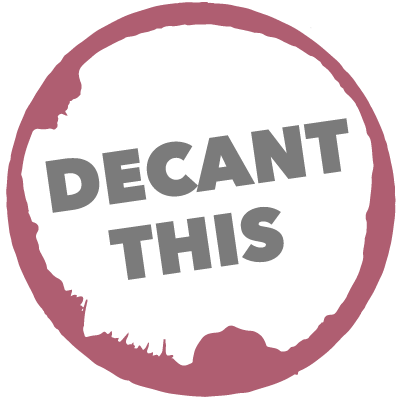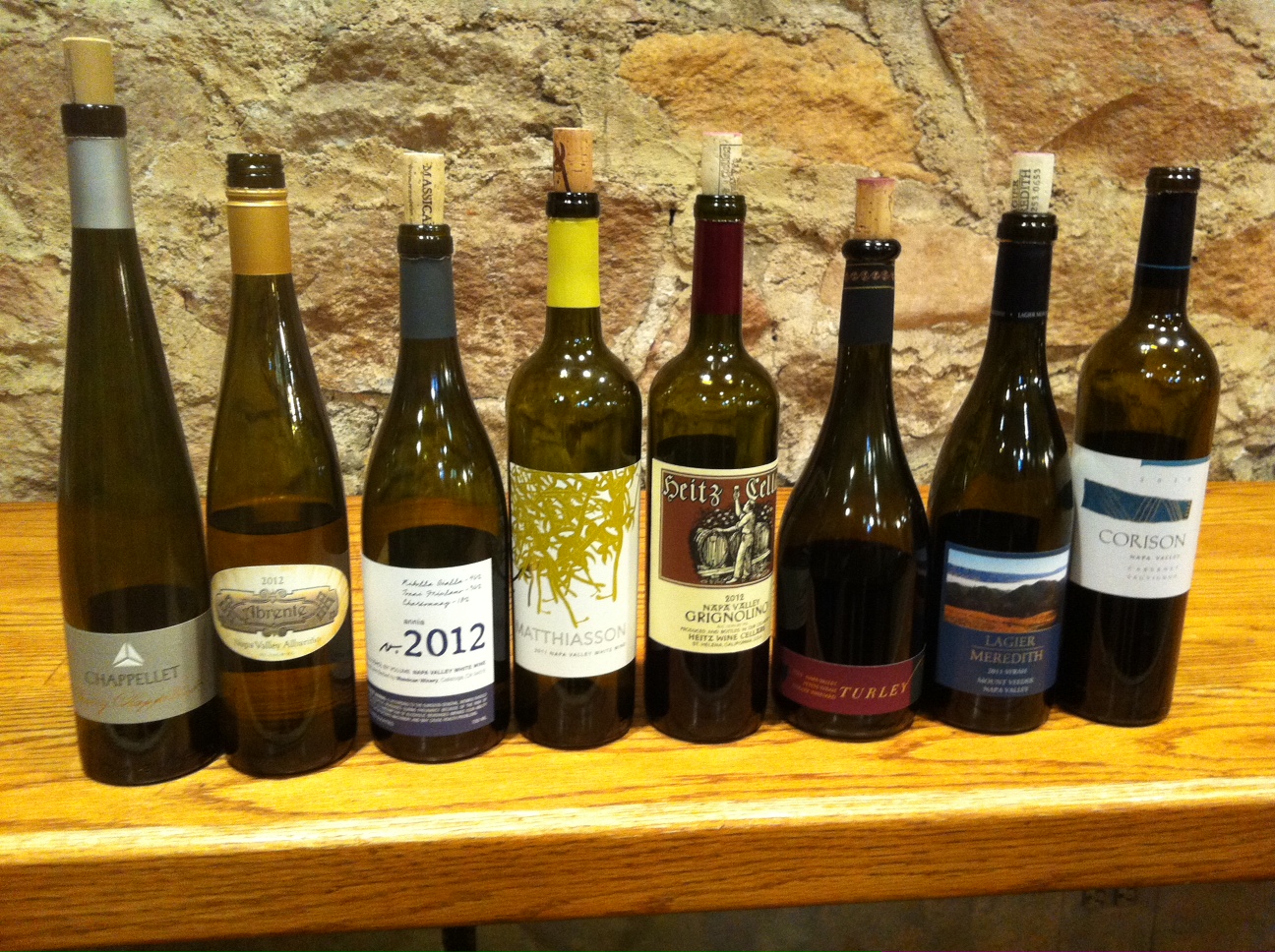Symposium gleanings: Saline, sales and more
Notes, quotes and anecdotes from last week’s Symposium for Professional Wine Writers (A “By the numbers” is coming soon):
• As we were tasting a delicious Chappellet chenin blanc, the SF Chronicle’s Jon Bonné pointed out a stat that threatened to be a buzz kill: In 1991, Napa had more than 1,100 acres planted to chenin, and now there are 22. A few years back, one of my favorite winemakers told me that “a lot of people in Napa should pull up their cabernet vines and plant corn.” I say they should plant chenin! Or grignolino, since there was a delicious version from Heitz in that session.
• During the same tasting of “unusual California wines [above],” Luke Sykora and I were marveling over an Abrente Carneros Albariño. I mentioned that as with some of that varietal’s Rias Baixas iterations, this one had a little saline element. He paused and said, “Yes. You know, I don’t know that I’ve ever had a wine from Carneros that gave me the sense that the grapes were grown near the ocean. [San Pablo Bay is just a few miles from Carneros].” He was spot on, which might explain why he’s editor of Wine & Spirits and I’m a blogger. :o)
• Mark Neal of Napa’s largest organic vineyard management firm said there is no cost difference to farm organically. On the same panel, Whole Foods’ Southern California wine buyer, Roger Fawcett, said the stores with the highest percentages of organic wine sales are near universities. And attendee Heidi Dickerson proferred a grand idea: “Let’s have the day arrive when [wineries] have to list the pesticides used to grow the grapes.”
* I compiled some highlights of Robert Parker’s talk last week. For those who want more, here’s a link to Alder Yarrow’s video of it and Richard Jennings has a more complete transcript with some sharp observations.
• Bill Cascio of the giant wholesaler Glazer’s had some interesting moments. He cited Far Niente, Louis Latour, Silver Oak, Jordan and Duckhorn as wineries that “understand the language of the three-tier system.” He said, with a straight face, that “We are not fighting [direct to consumer sales] because it’s a train coming down track. … It raises the tide of consumption.” He cited red blends as the wine world’s hottest current trend. He said “on-premise [restaurant] execution is the key to distributors’ future.” And he noted that the strategic intent of chains such as Total Wines is to have half of their revenues come from their private labels.
Silver Oak, Jordan and Duckhorn as wineries that “understand the language of the three-tier system.” He said, with a straight face, that “We are not fighting [direct to consumer sales] because it’s a train coming down track. … It raises the tide of consumption.” He cited red blends as the wine world’s hottest current trend. He said “on-premise [restaurant] execution is the key to distributors’ future.” And he noted that the strategic intent of chains such as Total Wines is to have half of their revenues come from their private labels.
*Eric Asimov of the New York Times made a couple of great points when talking about being a wine critic: “There’s a difference between stating an opinion and stating a case” and “Popularity [of a wine] is completely irrelevant in making critical judgments.” I take slight exception to the second statement, but only in my newspaper-writing guise, with its broader, more populist audience. While I might not be a huge fan of certain styles that have proven popular, like grassy New Zealand sauv blancs and buttery California chards, I need to be able to determine if wines are well-made exemplars of those genres. The venue you’re reading gives me more than a little freedom from this constraint.
2 Responses
Leave a Reply
You must be logged in to post a comment.





I picked up a bottle of that Abrente last year from a friend who’s on the Bedrock list. Agree very much with the salinity note. Was a very nice wine. A challenge I see for some of these very limited production grapes being incubated in Cali (and they’re coming from some of the winemakers I love) is that the gruners, albarinos, roussanes, etc. that Carlisle, Tablas, Bedrock etc., are nuturing to commercial viability have a somewhat steep price gap to their old world counterparts. My totally unsubstantiated guess is that it feels like the CA versions are coming in about $10/bottle higher than an equivalent “established” offering (site/quality) from France, Spain, etc. I wonder if that will cause their market interest to continue to be somewhat marginal. For my own buying, I’ve tried lots of them (Compagni Portis, White Coat, Abrente) but haven’t found my purchase dollars returning to those wines in follow on vintages given the better value from the same producers’ reds. We’ll see!
I think you’re right in most cases, Brian. The Abrente Albarino, though, is $23, at least on wine-searcher. That’s more than a Martin Codax, but very comparable to many Rais Baixas albarinos; some sit just below $20, but many are in the $22-$25 range. You might wanna try some of the Dancing Coyote whites (gruner, verdelho, albarino) that just hit the Twin Cities and are in the mid-teens.
But you have a great point in the market interest remaining marginal for the wines if they remain more spendy; they’ll be mostly curiosity pieces for those of us who want to see what California can do with these grapes.